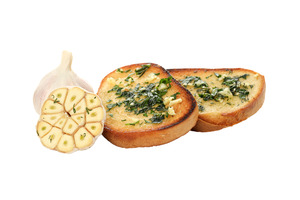Garlic, also known as Allium sativum, has a long history that spans thousands of years. It is deeply embedded in cultures around the world. Revered for its strong flavor and health benefits, garlic is an essential part of kitchens everywhere. However, its influence extends beyond cooking. Throughout history, garlic has shaped human health, culture, and beliefs. Ancient civilizations respected garlic not only as food but also for its medicinal and spiritual significance.
Origins of Garlic: A Global Spread
Garlic’s roots trace back to Central Asia, specifically regions like Uzbekistan, Turkmenistan, and Kyrgyzstan. Over time, explorers, traders, and conquerors spread garlic to various parts of the world, including the Mediterranean, Europe, Africa, and Asia. By 5,000 years ago, garlic was being cultivated in many ancient civilizations, showing its importance in early societies.
Key Points About Garlic’s Early Journey:
- Originated in Central Asia, including Uzbekistan and Kyrgyzstan.
- Spread through ancient trade routes, eventually reaching the Mediterranean and beyond.
- Has been cultivated for over 5,000 years by early civilizations.
Garlic traveled with people as they explored and connected with new regions. Its value as both a flavorful food and a medicinal plant made it a treasured part of daily life in many cultures.
Ancient Civilizations

In ancient Egypt, Greece, and Rome, garlic was used for food, medicine, and protection. These societies valued garlic not just for its culinary use, but for its role in boosting health and offering spiritual protection.
Ancient Egypt
In ancient Egypt, garlic was seen as a symbol of strength. Workers building the pyramids ate garlic to improve their stamina and endurance. It was also included in the tombs of pharaohs, such as King Tutankhamun, to ensure protection in the afterlife.
- Pyramid workers consumed garlic for strength.
- Pharaohs were buried with garlic as a protective offering.
- The Ebers Papyrus listed garlic as a treatment for heart issues and digestive problems.
The Egyptians believed garlic had protective and healing properties, using it in both daily life and spiritual practices.
Ancient Greece and Rome
In Greece, garlic was essential for soldiers and athletes. Soldiers consumed garlic before battles, believing it would make them braver and stronger. Athletes also ate garlic before competitions to improve their physical abilities.

- Greek soldiers ate garlic before battles for strength and courage.
- Greek athletes consumed garlic to boost performance.
- Roman soldiers believed garlic could protect them in combat.
Hippocrates, the “father of medicine,” also recommended garlic for treating various illnesses, including respiratory problems and digestive disorders. Similarly, the Roman author Pliny the Elder praised garlic for its medicinal properties.
Garlic Through the Middle Ages and Renaissance
During the Middle Ages, garlic remained important across Europe. People believed it could protect them from the plague and other diseases. Its strong smell was thought to repel “evil air,” which was believed to cause illness. Garlic also became linked to folklore, with many believing it could protect against witches and vampires.
Garlic in Medieval Europe:
- Used to protect against diseases like the plague.
- Believed to repel supernatural beings like witches and vampires.
- Common in folk remedies and health treatments.
By the Renaissance, garlic had become a popular ingredient across Europe, Asia, and the Americas. Explorers and traders helped spread garlic even further, solidifying its place in global cuisine.
Chemical Composition and Health Benefits of Garlic
Garlic’s health benefits come from its unique chemical makeup. Allicin, the main compound in garlic, forms when garlic is crushed or chopped. This compound gives garlic its strong smell and many of its health benefits.
Major Chemical Components:
- Allicin: Has antimicrobial, antifungal, and antioxidant properties.
- S-allyl cysteine: Provides antioxidant benefits.
- Diallyl disulfide: Reduces inflammation and supports heart health.
- Vitamins and Minerals: Garlic contains vitamin C, vitamin B6, manganese, and selenium.
These natural compounds contribute to garlic’s reputation as a powerful healer. Modern research confirms that garlic can help lower blood pressure, improve heart health, and support the immune system.
Ethnobotanical Uses of Garlic Across Cultures
Garlic has been used by many cultures for both practical and spiritual reasons. Its ethnobotanical uses show how different societies have relied on garlic for medicine, food, and protection.
Spiritual and Symbolic Uses

In various cultures, garlic was used to ward off negative energy and evil spirits. In Europe, people often hung garlic above doors or around homes for protection. Some cultures even saw garlic as a sacred plant, offering it to gods or using it in spiritual rituals.
Spiritual Uses:
- Hung above doors to protect against evil spirits.
- Used as an offering in spiritual ceremonies.
- Believed to shield homes from bad energy.
Medicinal Ethnobotanical Use
Garlic was commonly used in traditional medicine across many cultures. In Chinese medicine, it was believed to treat respiratory issues and digestive problems. In Ayurveda, garlic was considered a “heating” food that could balance the body’s energies.
Medicinal Uses in Ethnobotany:
- Chinese medicine used garlic to treat respiratory and digestive problems.
- Ayurveda used garlic to balance energy and treat ailments like indigestion.
- Native American tribes used garlic to treat wounds and infections.
Garlic’s versatility as a medicinal plant made it a key ingredient in traditional healing practices worldwide.
Medicinal and Culinary Uses of Garlic
Garlic has long been valued for its healing properties. Ancient civilizations used garlic as a remedy for various health problems. Even today, many people turn to garlic for its natural health benefits.
Medicinal Use Through History
In ancient Egypt, garlic was used to treat heart problems and digestive issues. The Greeks and Romans also relied on garlic to boost stamina and prevent infections. During the Middle Ages, garlic was applied to wounds to prevent infections long before antibiotics were discovered.
Historical Medicinal Uses:
- Egyptians used garlic to treat heart and digestive problems.
- Greeks and Romans used garlic to increase strength and fight infections.
- Medieval Europeans used garlic as a natural antibiotic for wounds.
Modern Medicinal Use of Garlic
Today, modern research supports many of garlic’s traditional uses. Garlic is known to help improve heart health, boost the immune system, and reduce inflammation. Many people take garlic supplements to benefit from its medicinal properties.
Key Health Benefits of Garlic:
- Heart Health: Garlic helps lower blood pressure and cholesterol levels.
- Immune Support: Garlic boosts the immune system, helping to fight off infections.
- Anti-inflammatory Effects: Garlic reduces inflammation, which can help conditions like arthritis.
- Antioxidant Properties: Garlic’s antioxidants protect the body from damage, reducing the risk of chronic diseases.
Garlic supplements offer an easy way to take advantage of these health benefits without eating large amounts of garlic.
Culinary Uses of Garlic
Garlic is used around the world to add flavor to many dishes. Whether raw, roasted, sautéed, or pickled, garlic adds depth and richness to food. Its versatility has made it a key ingredient in a variety of cuisines.
Versatile Culinary Applications
Raw garlic has a sharp, intense flavor and is often used in salad dressings, marinades, and sauces. Roasting garlic gives it a sweet, mellow taste, making it perfect for soups or spreads. Sautéing garlic brings out its aroma and flavor, which forms the base of many stir-fries, sauces, and pasta dishes.
Culinary Uses of Garlic:
- Raw Garlic: Used in salad dressings, marinades, and sauces.
- Roasted Garlic: Sweet and buttery, great for soups and spreads.
- Sautéed Garlic: A mild, sweet flavor often used as the base for stir-fries and sauces.
Famous Garlic Dishes
Garlic is featured in many famous dishes across the globe. From garlic bread to aglio e olio, garlic is a key ingredient in both simple and complex recipes.

Famous Garlic Dishes:
- Garlic Bread: Toasted bread rubbed with raw garlic and olive oil.
- Aglio e Olio: Italian pasta made with garlic, olive oil, and red pepper flakes.
- Chicken with 40 Cloves of Garlic: A French dish with roasted chicken infused with garlic.
Garlic’s ability to enhance both simple and sophisticated dishes makes it beloved in kitchens around the world.
Tips and Key Notes About Garlic
| Category | Tips & Notes |
|---|---|
| Best Health Benefits | |
| 1. Heart Health | Regular garlic consumption helps lower blood pressure and cholesterol, reducing the risk of heart disease. |
| 2. Immune Support | Garlic boosts the immune system, helping fight colds, flu, and infections. |
| 3. Anti-Inflammatory | Garlic’s sulfur compounds, such as allicin, reduce inflammation, making it beneficial for conditions like arthritis. |
| 4. Antioxidant | Garlic is rich in antioxidants, which protect cells from oxidative stress and may lower the risk of chronic diseases like cancer. |
| 5. Antimicrobial | Garlic has natural antibiotic properties that fight bacterial, fungal, and viral infections. |
| How to Use Garlic for Health | |
| 1. Raw Consumption | Eating raw garlic maximizes its health benefits, especially allicin. Crush or chop the garlic and let it sit for 10 minutes before consuming. |
| 2. Garlic Supplements | Odorless garlic supplements offer health benefits for those who can’t eat raw garlic. |
| 3. Regular Use | Consume 1-2 cloves of garlic daily (raw, cooked, or in supplement form) to gain maximum health benefits. |
| How to Use Garlic in Cooking | |
| 1. Raw Garlic | Adds a pungent, spicy flavor to dressings, dips, and marinades. Best used fresh or added at the end of cooking to preserve its flavor. |
| 2. Roasted Garlic | Roasting garlic softens its flavor and adds sweetness. It’s ideal for soups, mashed potatoes, and spreads. |
| 3. Sautéed Garlic | Lightly sauté garlic in olive oil to release its aroma, but avoid burning. This makes an excellent base for stir-fries, sauces, and pasta. |
| 4. Timing in Cooking | Add garlic near the end of cooking in dishes like stir-fries and pasta to retain its flavor and health benefits. |
| 5. Infused Oil | Infusing oil with garlic allows you to add garlic flavor without the need to use raw or cooked garlic directly. This method works well in salad dressings and marinades. |

